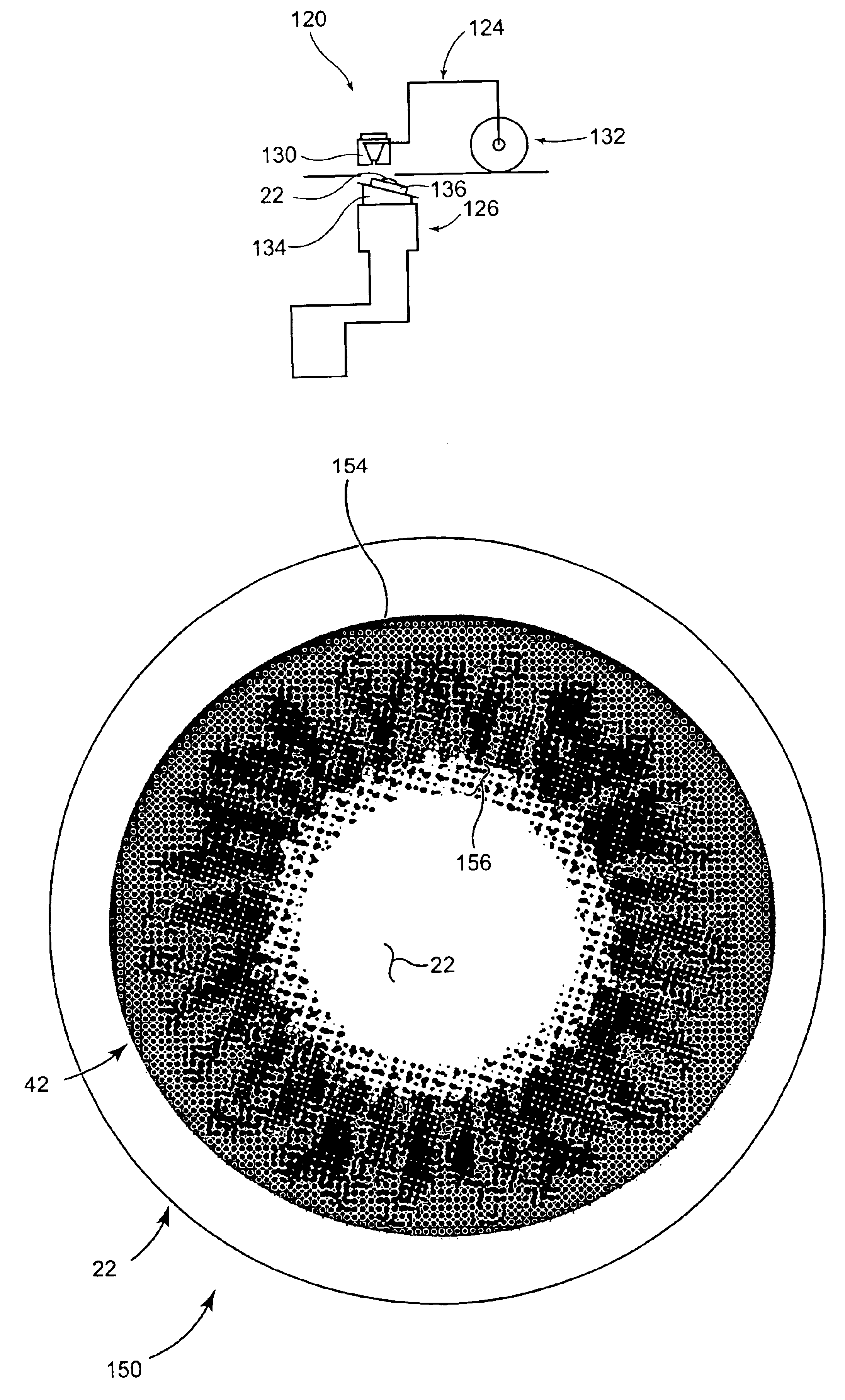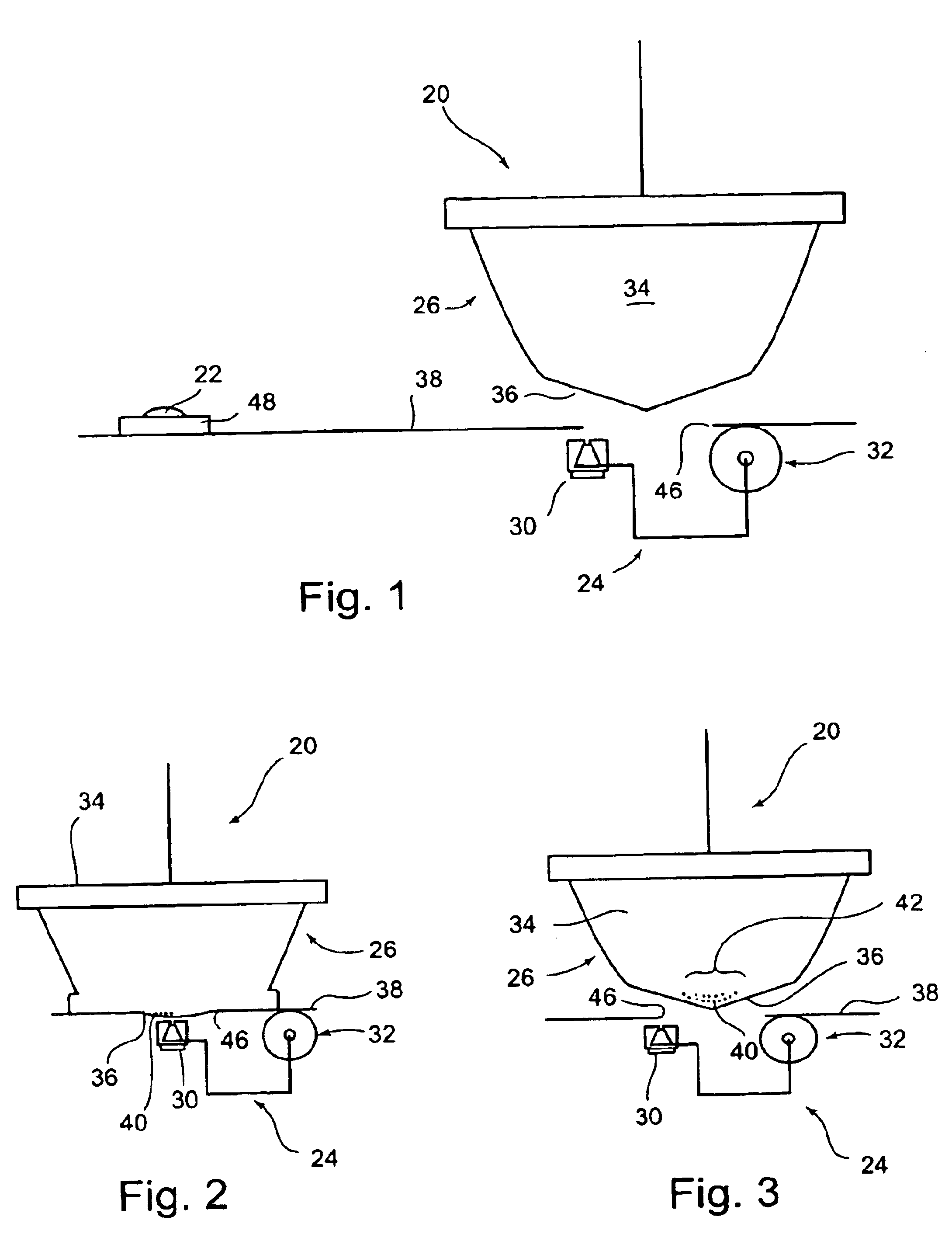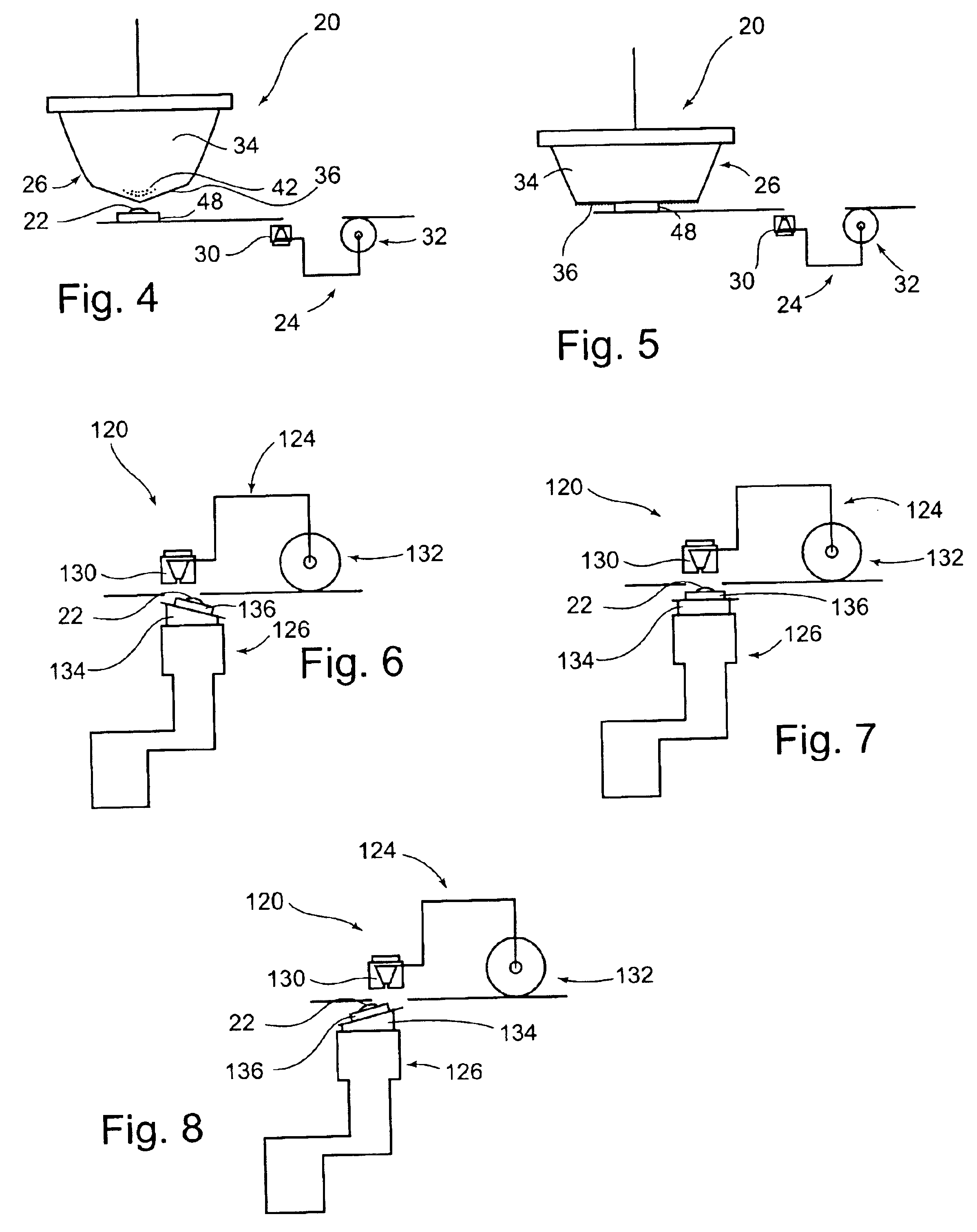Colored contact lens and method of making same
a contact lens and color technology, applied in the field of colored contact lenses, can solve the problems of unnatural looking iris, inability to achieve high detail or resolution patterns, and inability to achieve high resolution patterns, so as to achieve greater intricacy and resolution. greater
- Summary
- Abstract
- Description
- Claims
- Application Information
AI Technical Summary
Benefits of technology
Problems solved by technology
Method used
Image
Examples
Embodiment Construction
[0034]Referring now to the drawings, and first more particularly to FIGS. 1-5, a printing apparatus of the present invention is generally indicated by reference numeral 20. The printing apparatus 20 is adapted to deposit one or more colorants on a contact lens substrate, generally indicated at 22, in a manner to alter the appearance of the iris of a wearer when the wearer is wearing the contact lens substrate.
[0035]The printing apparatus 20 comprises an inkjet print mechanism, generally indicated at 24, and a pad printing transfer mechanism, generally indicated at 26. The inkjet print mechanism 24 comprises a plurality of inkjet print heads 30 and an advancing mechanism 32 for moving the print heads during a printing operation. Preferably, the print heads 30 are adapted to facilitate full color printing of a digital graphic image. The pad printing transfer mechanism 26 comprises a transfer pad 34 (preferably of silicone rubber) and a pad moving mechanism (not shown) for moving the p...
PUM
 Login to View More
Login to View More Abstract
Description
Claims
Application Information
 Login to View More
Login to View More - R&D
- Intellectual Property
- Life Sciences
- Materials
- Tech Scout
- Unparalleled Data Quality
- Higher Quality Content
- 60% Fewer Hallucinations
Browse by: Latest US Patents, China's latest patents, Technical Efficacy Thesaurus, Application Domain, Technology Topic, Popular Technical Reports.
© 2025 PatSnap. All rights reserved.Legal|Privacy policy|Modern Slavery Act Transparency Statement|Sitemap|About US| Contact US: help@patsnap.com



